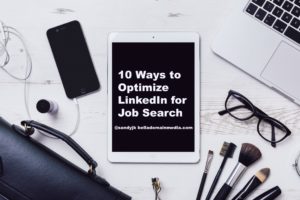The Ugly Truth About Employee Turnover In Silicon Valley


Turnover by data alone doesn’t seem to be a problem. If you look at the Bureau of Labor Statistics’ most recent jobs release, everything appears to be relatively okay. Hires remain higher than separations, at 5.7 million to 5.5 million. Look a little bit deeper, though, and there’s a worrying trend for those looking to retain the talent they bring in. Quits remain twice as high as layoff and discharges-more than double.
A little more research, and you’ll find the situation is particularly concerning in Silicon Valley. The turnover rate is astounding. Data on the 15 largest Bay Area tech companies one year ago revealed that employee retention ranged from 1.8 to 7.8 years.
The technology sector, in particular, has the highest turnover rate, at 13.2 percent. No tech company is immune. The median tenure at Amazon is only a year. Google, with known accolades as a great place to work, does only slightly better at 1.1 years. Apple? A meager two years.
All this means recruiting is only getting more competitive. Your best talent isn’t guaranteed to stay on board to see through your best-laid plans. Why?
Turnover Due to Talent in High Demand

Executives and hiring managers need to understand the value of the talent they have in hand right now. There’s currently a shortage of qualified tech professionals in the market. New companies crop up seemingly daily, offering new challenges and better compensation. All these exciting and high-paying jobs put the power in the hands of job seekers, not potential employers. That’s why nearly half of employees in tech stay within the field but bounce from position to position.
Do you want to attract the best workers for your positions, but aren’t able to top market compensation? Consider yourself out of the running for those candidates. Does your company have unresolved culture issues or a toxic workplace? Don’t expect to keep your best players for very long. Today’s best tech talent has no time for nonsense and will change course if they don’t like what they see. That includes unfulfilled promises. If the potential for advancement and professional development never materializes, the best tech employees will look to join a company that can follow through.
This culture of churn comes at a cost to businesses, as the constant search for new talent isn’t exactly easy or cheap. But are tech companies powerless when it comes to talent retention? Not at all.
Use Data to Curb Turnover

Employee surveys. Use employee surveys to find out what is most important to your employees in the areas of compensation, perks, career progression, and culture.
- Salary Information. A company that wants to keep its best employees while attracting more top-notch talent needs to start with research on current salaries. As a baseline, find out what qualifies as a competitive salary for the in-demand tech roles you want to fill. Understand what top of the market, mid-market and below market looks like for your industry. Not every business can compete on cash compensation, and that’s okay. If your company doesn’t have that kind of budget, there are other things you can offer to create your dream team. If you know what your competition is offering, you can devise a plan that does one better than the rest and clarifies your employer value proposition. At a minimum, you should adjust the pay of employees found to be significantly underpaid to mitigate the risk of losing good employees solely for better pay.
- Perks. Understand that perks don’t prevent turnover the way you think they might. They’re trendy and might sound good in a recruiting pitch. Cutting them, however, might help you offer something valued more to top talent. With extra room in the budget, perhaps you can better components of your cash compensation program with spot bonuses, signing bonuses or contributions to retirement savings. Whatever the case, target programming toward employee desires.
- Career advancement. Most employees will prioritize learning and development and career advancement when deciding between two companies. As such, some companies have adopted a career mapping strategy. Managers stay connected with their charges in a way that goes beyond the day-to-day tasks. They schedule one-on-one sessions to discuss professional goals and opportunities for career advancement within the business. This approach isn’t a fast-track to middle management, or trying to put a square peg in a round hole. It’s a holistic approach to helping your best workers find the right spot for them within your company’s hierarchy. What comes of this strategy is a clear understanding of where the employee wants to be, and how they can use their passion to get there.
- Company culture. Often a perception gap exists between the way executives view company culture and the realities of employee opinions. Tech companies need to take a hard look at their work culture through the eyes of their employees. Employees won’t want to advance themselves within a company that tolerates an abusive or discriminatory work environment. These extremes are not the only culture killers. Carefully exam the management styles of those running teams. Micro cultures can exist within a broader company culture varying widely by the manager.
Company culture should be continually changing, and any culture revamp starts from the top down. Executives need to embrace an employee-first approach in communication and policies. An employee-first approach means listening to the suggestions of their employees, with a focus on how to make the workplace more inclusive. The more voices heard via the survey, the better. Synthesize these suggestions into guidelines and protocols.
Recruiting is difficult enough without the added pressure of filling openings created by turnover. If you’re serious about stopping the turnover at your company, face these challenges head-on. It’s crucial for the long-term success of your business. Make an effort to attract the best people for the job, and then take their goals and aspirations seriously.
If you have success as a change agent stopping the stream of turnover on the job, add your comments and some of your best practices.










Comments
Comments
Powered by WP LinkPress